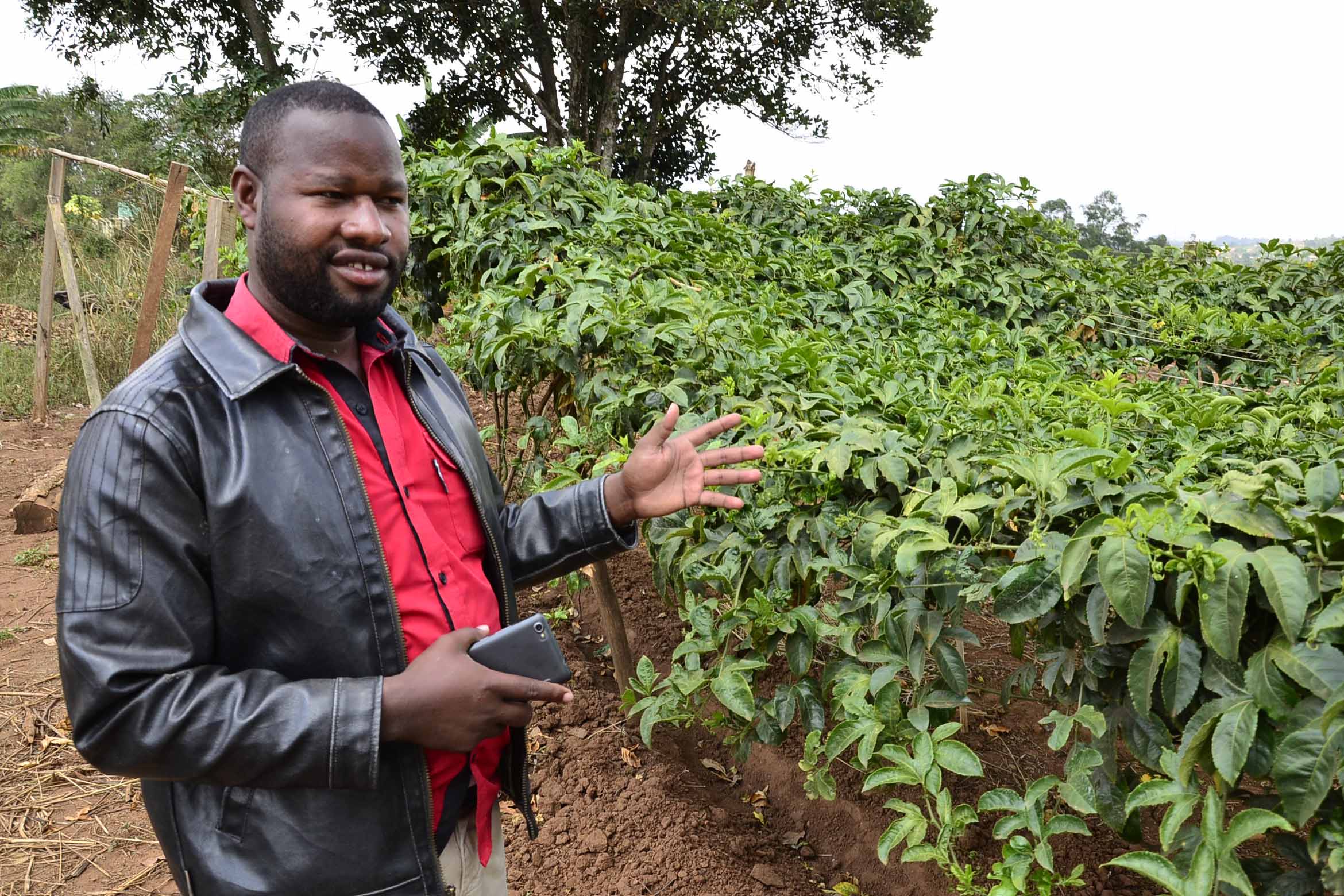Prime
These fast growing fruit trees will earn you more

Anyii inspects oranges in his orchard. PHOTO/FILE
What you need to know:
- Most fruit trees require a location with direct sun but also a dormant period and a certain chill period.
- It’s best to avoid planting site that is low-lying and might be cooler than other areas.
While fruit trees aren’t necessarily known for their fast-growing capabilities, it can typically take between three and seven years before they become established enough to produce fruit.
Some varieties mature faster than others and when farmers are looking for fast-growing fruit trees, it is recommended that they must acquire for self-fruitful trees, which are varieties that do not require cross-pollination or pollinators to produce fruit.
It is possible for farmers to help their fruit tree along in its maturing cycle. A healthy tree will flower sooner than a frail one.
It is important for the farmer to manage the tree’s cultural care requirements and provide adopt best practices for them to mature faster and yield well.
Be sure the tree gets an appropriate placement. Most fruit trees require a location with direct sun but also a dormant period and a certain chill period. It’s best to avoid planting site that is low-lying and might be cooler than other areas.
As such experts from the UK based Dotdosh Meredith publishing family have identified fast growing fruit trees especially in the tropics and availed literature about them for farmer uptake and below are the details.
Citrus tree
Citrus trees may be a great option for the farmer and the types include orange, clementine and lemon trees. This is because the fruits contain a lot of juice which can be utilised fresh or processed for commercial purposes.
These trees maturity size: are 20 feet tall although dwarf varieties can top out at 10 feet, they require sunlight of six to eight hours.
Apple trees
These trees are different from their non-columnar counterparts because they grow fruiting spurs along the central part of the tree’s trunk.
That means they grow more upright than sprawling varieties, which tend to produce long branches that hang toward the ground.
Columnar apples are crisp and juicy with a balance of sweetness and acidity, making them excellent for snacking, baking and sauces.
Just make sure you have more than one of these if you want to get to experience those delicious apples since they often require cross-pollination with another apple variety.
The mature size is 8 to 12 feet, they require direct sunlight from 6-8 days on daily basis and it takes approximately one year for a farmer to begin harvesting.
Mango trees
Mango trees are sumptuous, tropical staples that produce juicy, sweet fruits.
There are various varieties in the country with most growing naturally in the wild but a good number of farmers have adopted exotic varieties for commercialisation. Mango trees thrive in full sun and require well-drained soil to prevent root issues. The mature size: is 15 to 20 feet tall in the ground and 8 to 10 feet in pots and the fruit bearing time: is 1 to 2 years if grafted.
Guava
These evergreen trees are known for the sweet and tangy pink fruit that typically has a pink center and a green outer layer. Guava trees thrive in warmer regions since they don’t tolerate frost at all. A farmer who adopts best practices will realise maturity of the tree from five to six years and begin to harvest from two to four years.
Pear tree
Most farmers growing pears are from Western Uganda. The Asian pear trees thrive well in the region because it is cool.
Asian pears are known for their crisp texture and a sweet, melon-like flavor when ripe, making them refreshing to eat raw or in salads.
Farmers are advised to plant the Asian pear tree near another variety of pea since they require cross-pollination with another pear variety for best fruit production.
Peaches
The peach is a deciduous fruit tree first domesticated and cultivated in Zhejiang province of Eastern China.
In Uganda, it is grown in Western Uganda because it thrives well in cool areas.
It bears edible juicy fruits with various characteristics and health benefits. Peaches are low in calories and fat, rich in Vitamins, minerals and antioxidants
Avocado
It is important for consumers to enjoy fresh-picked avocado from the farmer’s farm. Avocado trees are valued for their nutritious fruits and they require full sun and regular watering to thrive.
In Uganda farmers are growing Hass avocado which produces fruits throughout the year, it is high in fat and has a rough texture.
The grafted varieties bear fruit within two years. Hass variety can be processed into a number of finished products including beauty products such as lotion as well as vegetable oil.
Star fruit
Carambola trees also known as star fruit are known for their distinctively shaped fruits and refreshing flavour. While they enjoy full sun to partial shade, they require regular pruning to maintain health.
The fruit has not been adopted much by farmers because it grows mainly in the wild in most parts of central Uganda.
Passion fruit
Passion fruit vines produce aromatic fruits that are a favorite for juices and desserts though they need ample support for climbing.
It is grown widely in the country and the farmer preferred varieties are Passiflora edulis forma flavicarpa, the yellow or golden passion fruit also known as the tropical passion fruit and Passiflora edulis, the purple type.
Once planted and best practices applied, the farmer will begin to harvest from 1 – 3 years period and continuous harvesting can be done for over ten years before replacing new seedlings.
Banana
There are more than 80 different banana species grown in Uganda today but most bananas consumed come from hybrids of either Musa acuminata or Musa balbisiana. Cultivars derived from M. acuminata are dessert bananas, the sweet variety available in open markets.




